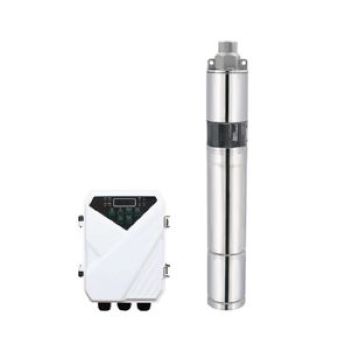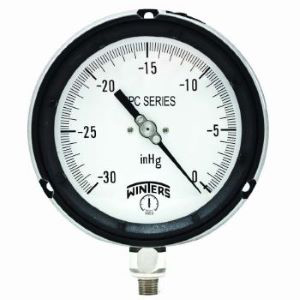How to Test a Well Pump?
A well pump is an important piece of equipment used to extract water from groundwater sources to supply water for domestic use, agricultural irrigation and industrial applications. In order to ensure that your well pump is operating properly and working efficiently, it is critical that you test your well pump's performance and functionality on a regular basis. The following section describes how to properly test a well pump to ensure proper operation and extended service life.
Commonly used testing tools
When performing a well pump inspection, it is important to ensure that the tools are properly used and operated to ensure a safe and accurate inspection process. If you are unfamiliar with the use of tools, it is recommended that you seek professional assistance. Depending on the specific inspection and needs, other specialized tools may be used. Tools commonly used when inspecting well pumps include the following 12 types.
Wrenches: For tightening or loosening bolts and connections, e.g. for checking the fixing and connection of well pumps.
Screwdrivers and screwdrivers: For removing and installing screws and bolts in well pumps.
Pliers: For holding and securing parts, e.g. for checking seals and connecting pipes.
Flow meters or flow gauges: Used to measure the amount of water pumped per minute or hour by the well pump to assess pumping efficiency.
Pressure gauge: Used to measure the head and pressure of a well pump to ensure that the well pump is able to pump water to the desired height.
Voltmeter or ammeter: Used to test the well pump's supply voltage and current to ensure proper power supply.
Thermometer: Used to measure the operating temperature of the well pump to prevent overheating.
Leak detector or water meter: Used to check the well pump for leaks and to safeguard the well pump seal.
Measuring ruler and scale: Used to measure the dimensions of the well pump and the distance of the components, to check whether it meets the requirements.
Lift gauge: Used to measure the vertical height at which the well pump is able to pump water.
Hand-held vibration meter or hearing tester: Used to check the operation of the well pump for unusual noises and determine if there is a problem.
Gloves and safety glasses: Used to protect the inspector's hands and eyes from injury and accidents.
Testing different types of well pumps
When testing different types of well pumps, such as submersible pumps, jet pumps, and shallow well pumps, the test methods and considerations may vary. Below are the test methods and corresponding precautions for each type of well pump. It is important to note that if any abnormalities or irregularities are found in the well pump during the testing process, it is important to perform troubleshooting in a timely manner. Repair or replace parts as appropriate. At the same time, carry out regular well pump maintenance and repair to ensure that the well pump maintains efficient operation for a long time. Moreover, when conducting a comprehensive test, the test results and data should be recorded in detail for future reference and comparison.
Submersible well pump
Test methods: Before testing, first check the installation and connection of the submersible well pump to ensure that the cables and pipes are connected correctly, and check whether the power supply voltage meets the requirements of the deep well submersible water pump. Next, intrude the submersible well pump completely into the water, make sure the pump body and cables are underwater to avoid overheating of the motor, and make sure the inlet and outlet of the pump are not blocked. Then turn on the power and observe the starting process to check for any unusual noise or vibration. Subsequently, test the pumping efficiency of the submersible well pump, you can use a flow meter to measure the amount of water extracted per minute or per hour, while using a pressure gauge to measure the head of the pump to ensure that it is working properly and outputting a flow rate. Finally, let the submersible well pump continue to work for a period of time to observe whether the submersible well pump is running stably and whether there is any overheating.
Note: The submersible well pump should be started after it is fully submerged in water to avoid pump idling and prevent damage. During the test, make sure there are no foreign objects or obstacles around the deep submersible well pump to avoid affecting the normal operation of the pump. In addition, it is strictly prohibited to immerse the cable plug of the submersible pump in water to avoid electric shock accident.
Well jet pump
Test method: First, make sure the well jet pump is connected to a water source, usually a pool or bucket. Next, start the convertible well jet pump and observe whether the jet pump starts pumping water and whether there is any abnormal noise. Subsequently, measure the flow and head of the jet pump with a flow meter and pressure gauge. Finally, test the performance of the deep well jet pump under different inlet water levels and nozzle angles. Secondly, it should be noted that for double-suction jet pumps, one side of the suction inlet needs to be closed during the test and only one side is kept working.
Note: During the test, make sure that the inlet and outlet of the jet pump are not blocked, otherwise the normal operation of the pump may be affected. In addition, pay attention to the nozzle angle and position of the jet pump, which will directly affect the flow rate and head of the pump.
Shallow well pump
Test method: Firstly, install the deep shallow water pump correctly in a suitable location, make sure it is solid and connected to the water source. Under the premise of ensuring that the power supply is correctly connected to the pump, start the pump and observe whether there is any noise, and ensure that the pump motor rotates in the correct direction so as not to reverse it and cause damage. Subsequently, use a flow meter to measure the flow rate of the shallow well pump, or adjust the pump's water output by turning on different faucets or sprinklers to obtain test data at different flow rates. Next, a pressure gauge was used to test the head under different water level conditions to simulate different operating conditions in real-world applications. In addition, a manometer can be used to measure the power loss of the deep shallow well pump under different flow and head conditions. Finally, check the sealing performance of the shallow water pump to ensure that no leakage occurs and to avoid water leakage during operation of the pump.
Note: During the testing process, make sure that the inlet of the shallow well pump is not blocked, otherwise the normal operation of the pump may be affected. During the testing process, do not let the shallow well pump idle to avoid damaging the pump seals and bearings.
What is precautions for a well pump?
Safe operation: Ensure that you know and follow the well pump's instruction manual and safety procedures before testing. Wear the necessary personal protective equipment such as helmet, gloves and goggles.
Power supply check: Before testing the well pump, check that the voltage and frequency of the power supply matches the rated voltage and frequency of the well pump. Avoid using the wrong power supply, which could damage the well pump and other equipment.
Verify connections: Ensure that the well pump is properly connected to the water source or plumbing system, and check that pipes and fittings are secure to avoid leaks and leakage problems.
Ensure water source: Before testing the well pump, make sure the water source is adequate and avoid running the well pump at no load to avoid damaging the pump seals and bearings.
Observe abnormalities: During the test, closely observe the operating condition of the well pump and watch for abnormal noise, vibration or other unusual conditions. If abnormalities are found, stop the test immediately and check for problems.
Step-by-step testing: During testing, it is recommended to gradually increase or decrease the load on the well pump to avoid sudden changes in operating conditions and to prevent overloading of the well pump or other problems.
Measurement data: Use suitable instruments and equipment to accurately measure the well pump's flow, head, power and other performance parameters, and record the test data.
Auxiliary equipment: During the test, flow meters, manometers, power meters and other auxiliary equipment can be used to help measure and monitor the performance of the well pump.
Maintenance: After the test, timely maintenance and repair of the well pump, clean the pump body, check the condition of seals and bearings and other components to ensure that the well pump is in good condition.
Seek professional help: If you are unfamiliar with the testing or operation of well pumps, or encounter problems during the testing process, it is recommended to seek professional help and guidance.

